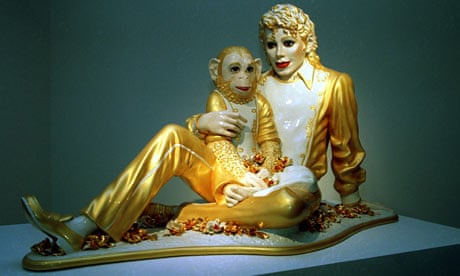Writing Journal
Prompt #10: Amatuer Curator
Collecting objects can be fun and over time prove to be very rewarding. Each item contains its own unique backstory as to how it became a part of the collection. For this assignment, I chose to collect pens. Not quirky or anything special, sure, but useful it proved to be. Having a collection of pens readily available can provide a sense of preparedness for any situation. This becomes a very reliable collection for a college student. As I am human, I too, am flawed. I am forgetful, and having emergency pens stashed away in secret pockets can come in handy. In the depths of all my book bags, there I stashed a pen. Throughout the winter, in the pockets of all my winter coats, there I stashed a pen. When the weather became hot, in all my pants, I stashed my pens. The pens are collected unintentionally, rather I find them throughout my daily life as a college student on campus. Whether it’s in the library, my dorm, my home, or in public, each pen has its own story that not even I, the current owner, know of. This has not been the first time I have started this collection either. This ritual of collecting pens and stashing them for future preparation has been one that has been practiced since my elementary days. It has never failed me, and I do not plan on stopping. (P.S. a good portion of my pens got lost in my winter clothing)
Prompt #9: Female Inventors & Small Objects that Revolutionized the World
Mary Anderson was born in Alabama in 1866, and she worked as a real estate developer and rancher. During a visit to New York City in 1903, she noticed that the streetcar driver had to stop the vehicle every few minutes to clear off the windshield by hand. Anderson saw this issue and instantly started working on a solution. Her invention consisted of a rubber blade is moved back and forth with the help of a lever; Anderson’s invention would be called the windshield wiper. Anderson received a patent for her invention in 1903, but it was not immediately successful. She tried to sell her patent to a number of companies, unfortunately, they showed no interest. It wasn’t until the automobile became more popular that Anderson’s invention gained traction. In 1916, a company called The Cadillac Motor Car Company began to include Anderson’s windshield wipers in its vehicles. Soon after other car manufacturers did the same; the windshield wiper became a standard feature on all automobiles. Today, the windshield wiper is an essential safety feature on all motor vehicles. Without it, your vehicle cannot pass inspection. This is due to it helping drivers see the road clearly in rain, snow, and other inconvenient weather conditions, making driving safer for everyone on the road. And while there have been many improvements and modifications to the windshield wiper since Anderson’s invention, the overall design remains the same. Mary Anderson’s invention is a reminder that sometimes the best solutions to problems are the simplest ones. Her windshield wiper has made a significant impact on road safety, and it is a great demonstration of a small object that can change the world.


Prompt #8: Objects/Materials of Desire
The society I live in is very much a desire-based society. With many people chase after materialistic objects, sexual cravings, status, money, and power. More often than not, these desires result in inevitable damage to the person, whether it be the relationships with themselves, significant others, families, and or friends. Many times these damaging desires do not come up to your attention until it is impacting you negatively. One of these objects is the ideal physique. Many, both men and women, desire a certain physique and are actually willing to work for it. Although this at first glance seems great for them, it becomes damaging when certain actions become habits. One of the most common examples would be that of enhancers. Working out takes time and discipline; it can take months to years to achieve the dream physique many see on social media. This is, without the use of enhancers. Enhancers can be known as anabolic steroids, more known as trenbolone and testosterone, to name a few. Through the use of these anabolic steroids, the dream physique many spend years working on can suddenly be achieved in half of that time or less. According to the National Library of Medicine, “there are as many as 3 million steroid users in the USA” (para 2). To many people who want results quicker, this seems like an ideal course of action to take. However, the underlying damage that occurs when using anabolic steroids is crucial. Damage to the liver, potential hair loss, potential irritability and mood swings, and difficulty sleeping are all underlying effects that are possible to take place while using the drug. Unfortunately, to many, this is a sacrifice they are willing to take. This sacrifice they take shows how their desires can drive them to take action, although damaging the very body they are working on, for the sole purpose to achieve a certain physique. This practice can be commonly seen in the bodybuilding community.

Prompt #7: The Century of the Self: Part 1 “Happiness Machine”
Edward Bernays’ work that intrigues me is his development of the concept of public relations and his application of psychology to influence public opinion and behavior. Bernays believed that people’s desires and actions could be shaped by appealing to their subconscious desires and emotions, rather than solely through rational argument. His methods of using media and advertising to manipulate public opinion and create demand for products have become the norm within the marketing industry. Today, many companies use psychological tactics to influence consumer behavior, such as creating a sense of urgency, scarcity, or social proof. This is seen in terms such as “limited” or “one-time offer”. In terms of my own consumer relationship with objects, I can see how Bernays’ work has influenced the way I perceive and value products. I am aware that companies use advertising and branding to create a certain image associated with their products, and how this can possibly affect me. Overall, while Bernays’ impact on our culture is undeniable, it is also important to consider the ethical implications of using psychological tactics to manipulate public opinion and behavior. As consumers, it is important to be aware of these tactics and make informed choices based on our own values and needs, rather than being easily manipulated by the marketing strategies businesses use.
Prompt #6: Fashion & Identity
The Guatemalan cultural demographic had clothing help shape its identity through the use of clothing. With over 800 different styles of indigenous clothing in Guatemala, each being designated to a specific community in the country. Each community has a different construct for its fashion, an example being the Santa Lucia Utatlan. Santa Lucia Utatlan, a blouse called Huipil is characterized by the colorful zig-zag pattern and the embroidered collars and sleeves, often adorned with small rhinestones. Each community has specific designs and due to the specific designs, others can tell where you originate from, hence defining your identity through the method of fashion. Just like Texas has the cowboy hat distinctly for western deserts, that is how Guatemalans designate certain clothing to each community. The regional differences began as a dress code implemented by the Spanish colonial officials to identify people by a community of origin for tax collection purposes. The color, style, and symbols allow for different representations such as economic status, marital status, and region of origin. I went on a trip to Guatemala and the native lady in charge of the cloth-making store described to me and my family how the way women wear a scarf in the sun describes whether she is single, engaged, married, dating, or widowed. The rather interesting concept is almost like a flag party here in the U.S. to show marital status.


Prompt #5: Cultural Icons
Any civilization in the world has culture. With culture, certain things begin to have iconic appearances, symbolizing or representing something within the culture. In Guatemala, the Quetzal, is a cultural icon. The quetzal is the national bird of Guatemala, residing in moist biologically rich cloud forests 4000-7000 ft of elevation. Not only is this the national bird, it also holds a spot in the middle of the nation’s very own flag! The quetzal is iconic for a reason, symbolizing freedom, this bird was thought to starve to death rather than live under captivity. This truly shows the severity of the situation as well as demonstrating why exactly the Quetzal represents freedom. This reputation has stuck with the Quetzal for a while now, dating back to the Mayan tribe days while being known as the Splendid Trogon. The main event that pushed for the Quetzal to represent freedom and an icon within the culture would be when there was a power struggle amongst the indigenous people and the spanish. From personal experience I can also back this up through witnessing the constant use of merchandising of the quetzal in the airports and tourist places in Guatemala. The bird can even be spotted on the currency of the country.


Prompt #4: Kitsch Object
An example of a Kitsch object would be a model made by Jeff Koons, the Balloon Dog (Blue). This Kitsch is highly valued selling at a price of 34.8K in USD. The medium of which it was made is mixed media. The measurements of the kitsch is relatively small, measuring to 40 cm x 47.8 cm x 15.7 cm. With low quality medium and a relatively small size, it has a childish, tacky aesthetic to it. Jeff Koons is a well-known contemporary artist, mostly known for his kitsch work. His career involved working with many people in the pop culture world, from Gaga to even doing a sculpture for Michael Jackson. Developing a style of stainless steel creation and often finishing with a shiny, mirror like surface, Koons has earned the right to be considered high-status for many. Since his name has such a high status within the Kitsch community, it would give the right for any new works to automatically reach high status as well: including the Balloon Dog model.
It fascinates me considering that this kitsch holds such an astonishingly high price. Not only this but the simplistic vibe adds for a great decoration, price aside I would own this and place it in the bathroom. The color blue and the clean finish gives it that modernized look as well. Most kitsch I come across are very “vintage”, having something modern and minimalist is a nice change of pace for me. I have changed my mind in the middle of my journal, yes I can do that. I would place this balloon dog worth 34.8K USD right in my bedroom next to the tv. It would add to the ambiance lighting as well, overall connecting rather smoothly with the rest of my simple and clean aesthetic.


https://www.composition.gallery/art/jeff-koons-balloon-dog-blue/
Prompt #3: Fetish Objects
Kitsch art, popularized in the early 20th century, often gives off an accurate depiction of a certain subject. Mostly through mini sculptures, this form of pop art became a representative of culture, community, and in most cases had an extra functional use to them. In 1988, Jeff Koons created a kitsch influenced by pop culture. The kitsch itself was based off of Michael Jackson (MJ), representing MJ and his pet chimpanzee, Bubbles. The kitsch itself was made of medium known as porcelain, a clear ceramic. Being relatively small in size, it measures to 110 cm x 179 cm x 83 cm. The sculpture itself was influenced heavily by MJ’s music, leading Koons to give MJ more feminine features in the sculpture: heavily lined eyes with sensuous red lips, many disapproved of Koons work. Koons found MJ to be very supportive throughout the mass disapproval, thus, he continued his work. To design Bubbles, Koon hired a photographer to supply him with references of Bubbles. The sculpture itself is used in our culture to represent what MJ stood for. Change. Frowned upon for the feminine features in the sculptor, it represents a form of revolution. The way it went against societal standards and was heavily disapproved, yet made it to The Broad in LA in the future years. Not all kitsch had functional uses, some had political and societal representative uses as well.
https://artincontext.org/kitsch-art/
https://www.bbc.com/news/magazine-30439633
https://fwmoa.blog/2019/04/30/art-term-tuesday-illlegitimate-art-kitsch/

Prompt #2: Bizarre Collections
Society seems to be constantly moving at different paces, albeit all fast ones. Although, even with this occurring, there are still rituals we all tend to have in common. Collections are easily a common ritual shared amongst society.
At SUNY New Paltz, the culture on campus is definitely a different culture from what I am used to from my environment at home. Therefore, I expected to meet people completely different from what I am used to. It’s a great experience, just in my dorm hall alone, I have met many different people beyond what I imagined.
Sabrina Herrera, a first year on campus, is known for her bizarre amount of funko pops. Funko pops are not a bizarre collection to have, for Sabrina however, the rules change. With an estimated amount of one-thousand-five-hundred dollars spent into this collection, and multiple limited editions, Sabrina has built an empire of a collection. Quite literally as well, the funko pops themselves take up a full corner in her room, totaling to 83 funko pops: reaching to over 6 feet in height! Surely this collection is bizarre in the most positive light.
This Collection is significant considering not just her but funko collectors as a whole, since the funko pops in the collection are all rare or high in value. To break it down further, Sabrina has collected these funko pops at original price, however since they were limited, she can now resell these for tenfold of what she originally spent. Ultimately this collection can also be perceived as a profitable investment; clearly stating how significant this collection really is.
Sabrina takes pride in her collection and is continually growing it. A small community has grown between Sabrina’s friend group. For special holiday events, they prioritize giving Sabrina funko pops to contribute to the funko pop empire.

For my final journal I am thinking about collecting an item that can be of use to me on a daily basis.
Prompt #1: Childhood Collections
As children we tend to cling to certain objects for emotional reasons. At times, these objects begin to grow and become collectibles to us. However, for me, this quickly turned into an absurd obsession with collecting stickers. Whether it was from after the doctor appointments or cheap 99 cents worth of pamphlets, stickers were my jam.
My room at the time was on the second floor, with the ceiling sloped taking the shape of the exterior side of the roof. Every time I collected a new sticker, I would rush to my room and stick it onto the sloped ceiling. I would soon grow my collection to the point where it took up the entire sloped side of the ceiling! This was possible since my family didn’t take it down. They didn’t become bothered by the stickers, mainly due to stickers being harmless to the paint. The stickers were separated into themed waves. Each category was built off of how large the sticker was, there tiny, small, medium, and large groups. It definitely sparked a creativity switch in me, planning on where the next sticker would go in order to grow the collection in order. Yes, this is what I would think as a child.
As the collection developed over the years, yes years, the collection became quite the unit. However, due to certain circumstances I had to change my room. Of course, when I heard about this, I didn’t know what to do. I was in distress. I had no idea on how to preserve my collection from any damages. As I thought about it, I realized that I had completely no control over what the future would look like for my collection. I finally was able to come up with a conclusion. This conclusion, however, was also not a solid guarantee for success. I accepted either outcome, ready to take the risk.
In full defeat, I walked to my mom later that day and brought this issue up to her; I wanted to preserve the collection but that wouldn’t be certain when I would be sleeping in another room. She listened to my situation, then offered a proposition. She would repaint the walls and cover the collection with a tapestry instead of painting over it. What seemed impossible to me, suddenly unravelled itself right in front of me. A solution was made.
My days thick, messy clouds suddenly disappeared, allowing a ray of light to shine down on me. I felt accomplished, the way I managed to brainstorm in order to preserve my sticker collection, even if it meant trusting in someone else with the future of something that held such value to me at the time.